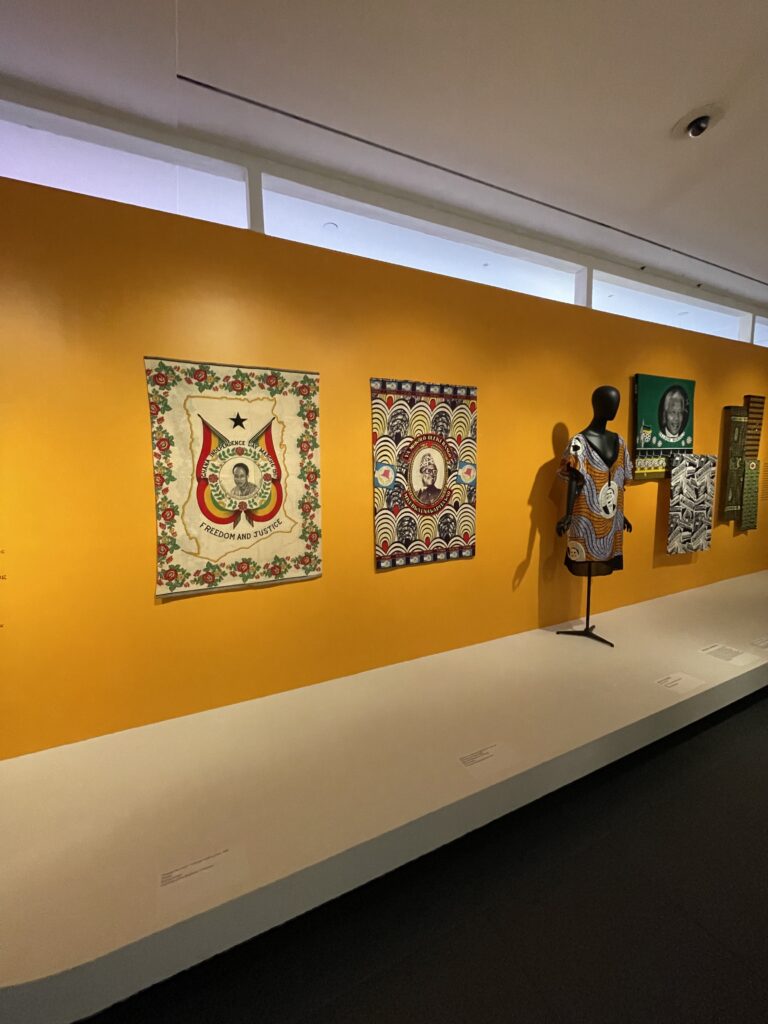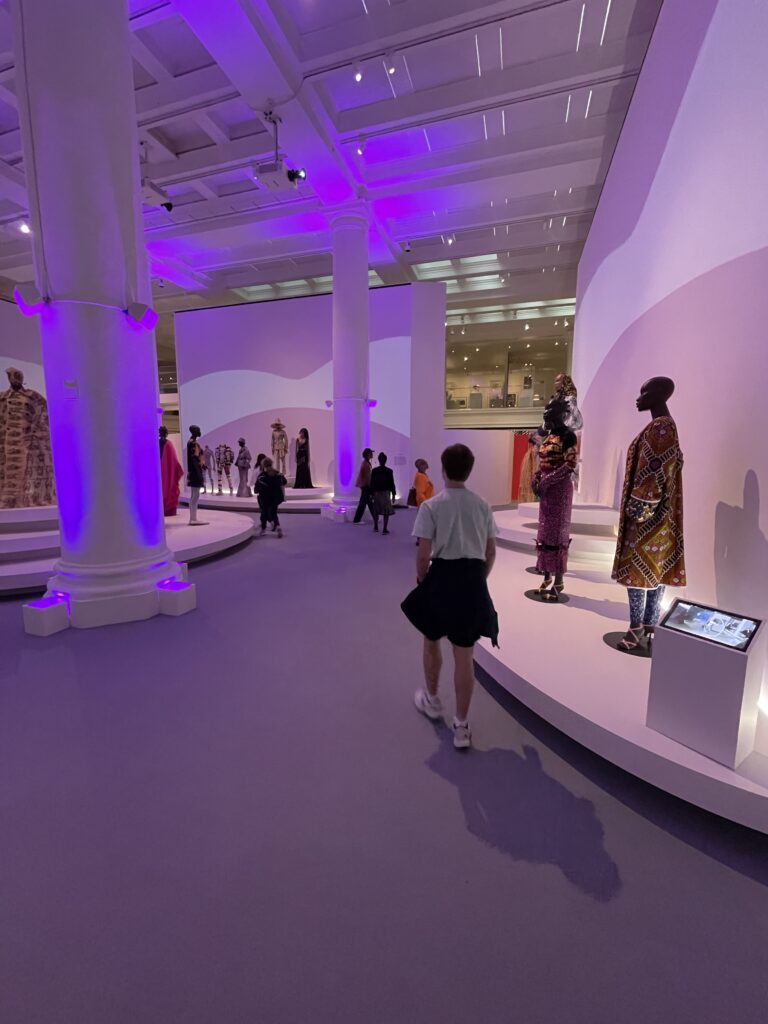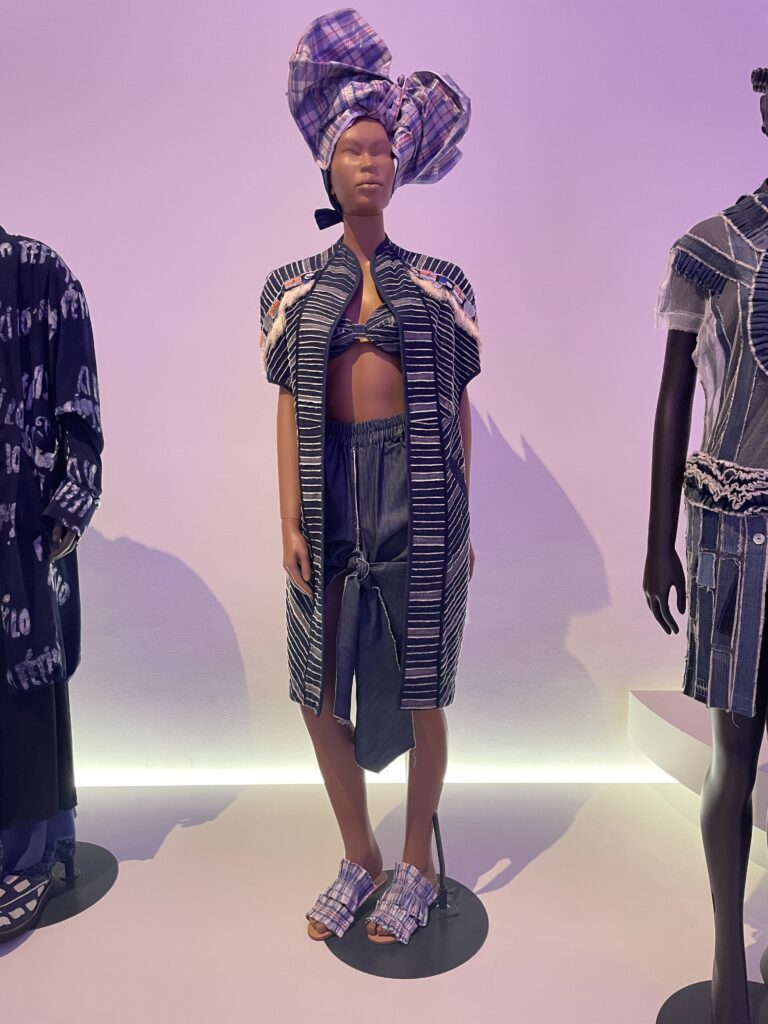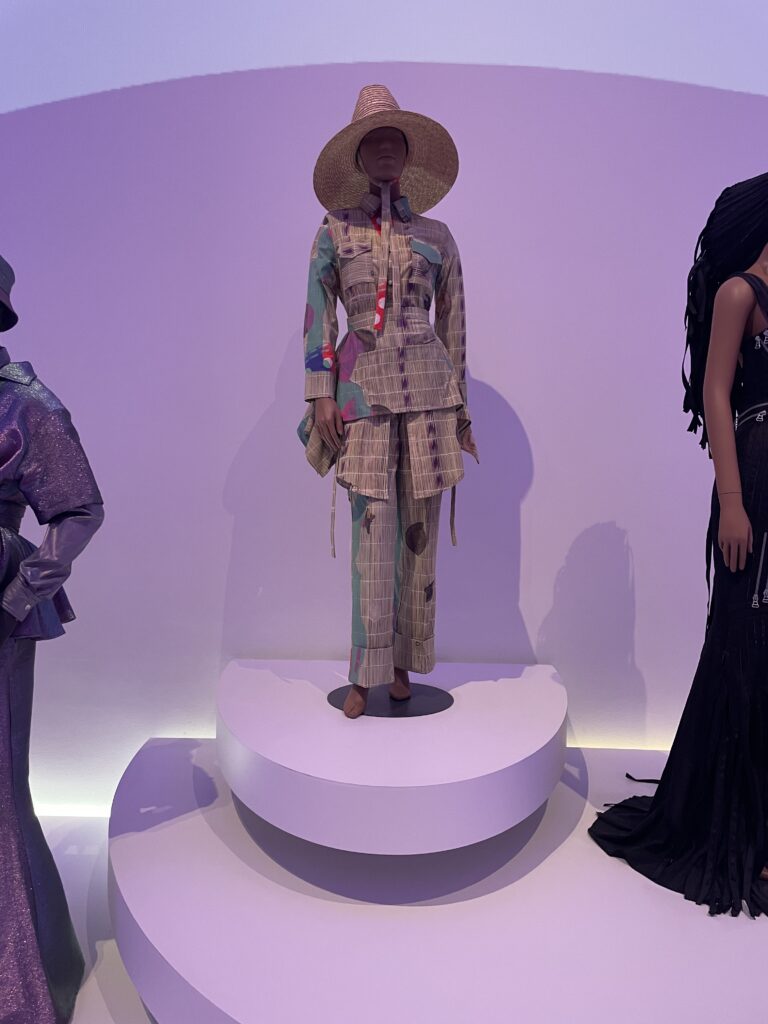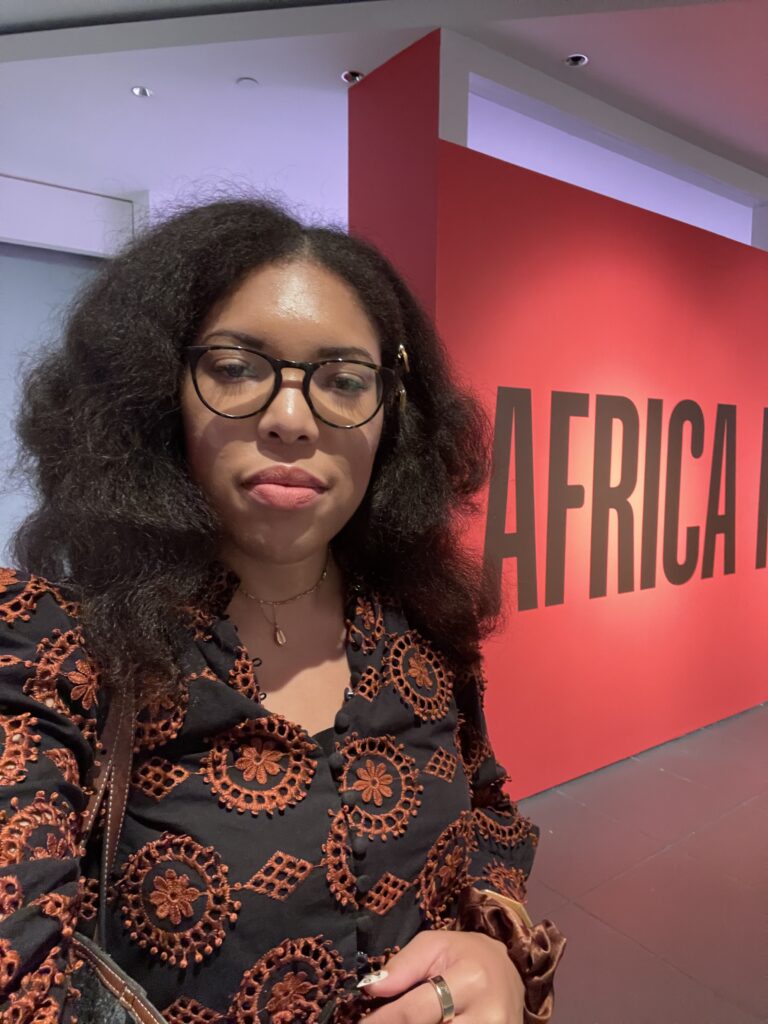Africa Fashion Exhibit at the Brooklyn Museum
The Brooklyn Museum’s clever sales tactic of hosting two ticketed shows that appeal to the same demographic and setting the total price for both above the cost of a membership has surely increased their ranks. However, this is not a complaint. For $40 I saw two lovingly curated shows (Africa Fashion, Spike Lee) and I have the option to return for free anytime I want before my membership expires in the next 6 months.
The most impressive thing about the Africa Fashion exhibition — and this says a lot considering the inclusion of feathers, gilded fabrics, upcycled garments and arresting headwear — is the way the curators are able to slow you down and control the narrative. Before you see a single piece of fashion, you’re faced with the history of Africa and seated in place and time. Certainly fashion has existed in Africa in colonial and pre-colonial eras, but this show selects a specific wedge of time to frame their focus. The 1960s, the container for the civil rights movement in the US, also housed the wave of liberation in Africa. Nearly the entire continent bought or bartered or waged war for independence and it is in this moment that Africa Fashion (as defined/limited in the show) was born. Self-definition was happening in the public sphere (through politics, currency, and nationalism) as well as the personal and private spheres of fashion and self-presentation. With nods to the tribal roots and traditions that birthed kente, batik/Ankara, and adire, we jump into the artists that paved the way for the pantheon of Africa fashion we see, wear, and evaluate today.
The exhibition unsheathes the dilemmas inherent in the title. What is Africa Fashion? How is Africa Fashion different from African Fashion? Is it anything designed by a Black African person? Is it anything designed on the continent? Is it any ensemble an African person wears? And, what is to be done about the blurred lines, especially related to the call and response between African and Black American hairstyles/fashion? To get specific: which group can truly take credit for the Afro, if it is our hair’s most natural state?
In the spirit of collectivism and liberation, the answers to these questions are not terribly important – but as a Black American viewer I wondered which outfits in the closing section I could wear without looking as if I was in costume. The show is more political commentary (the body as clothing!) than a design retrospective, but the impeccable ensembles and the creativity of each piece reminds me of a quote by playwright and director, George C. Wolfe, plastered on the wall at NMHAAC. “God invented Black People, and Black People invented style.” Aurora James, featured prominently in the bookends of the show goes so far as to say that Black women and orchids invented camp. Who invented what and where they did it are thoughtful accessories. The statement piece: It was Us and We been doing this fly sh*t for a long time.


